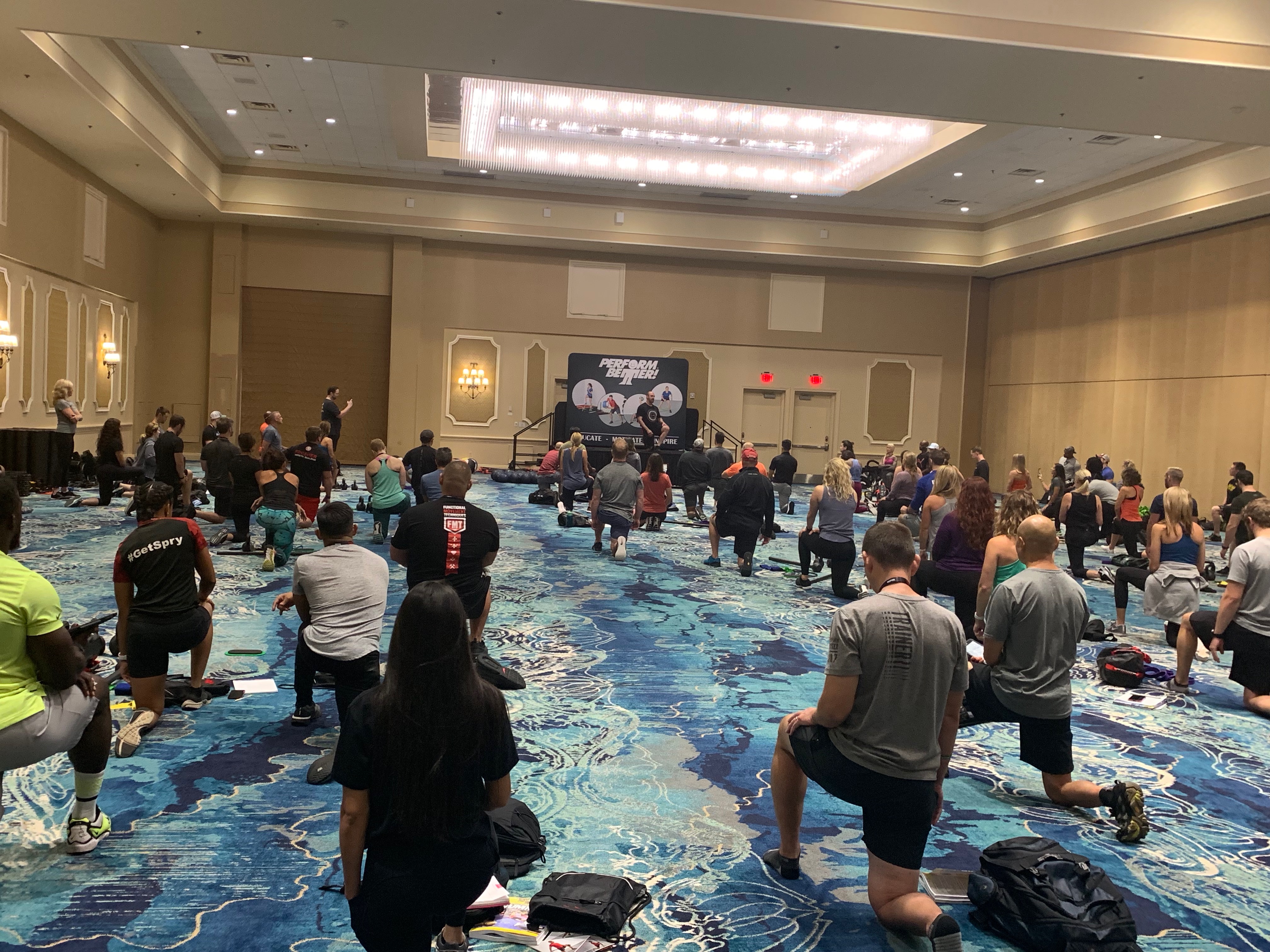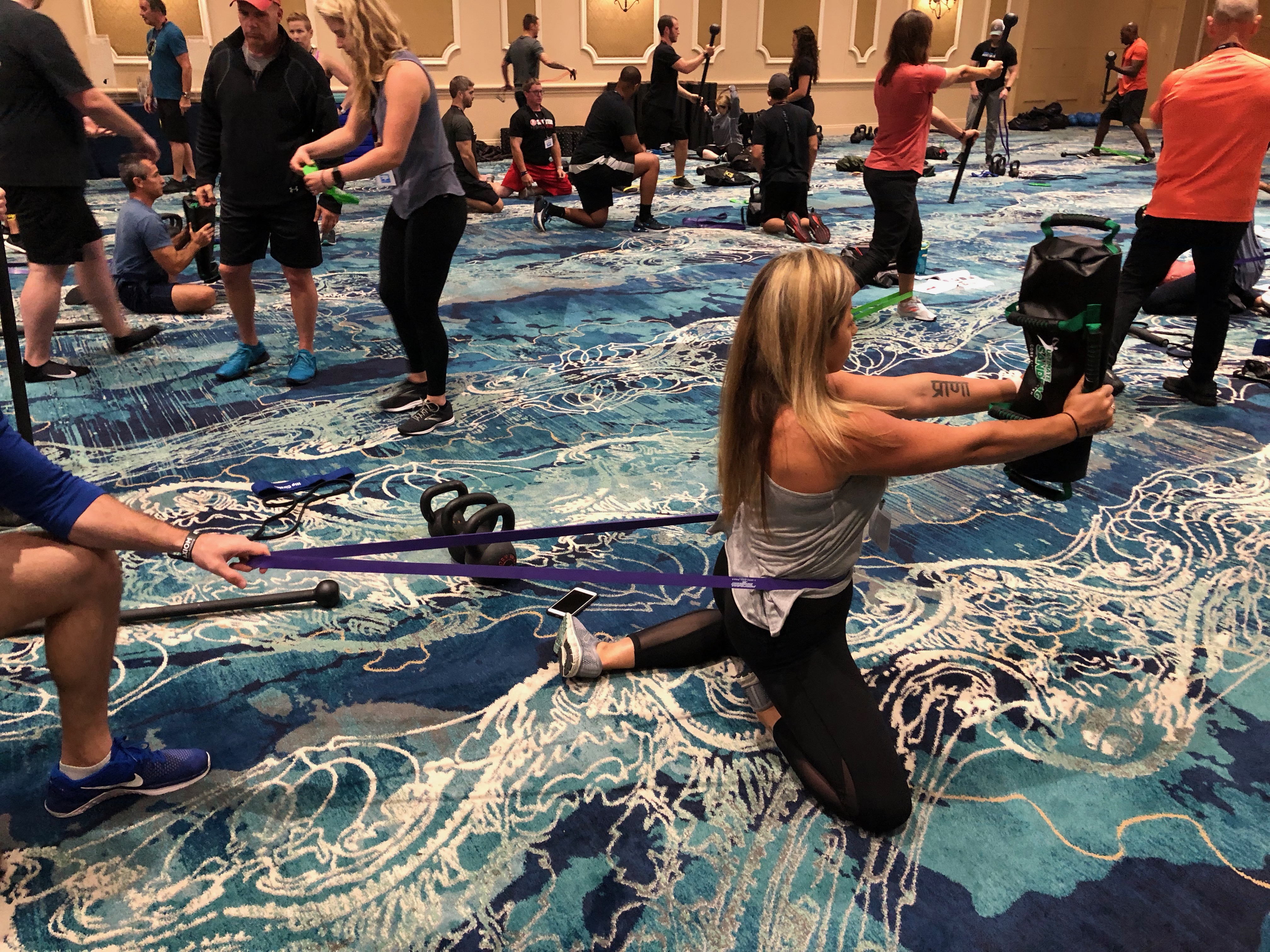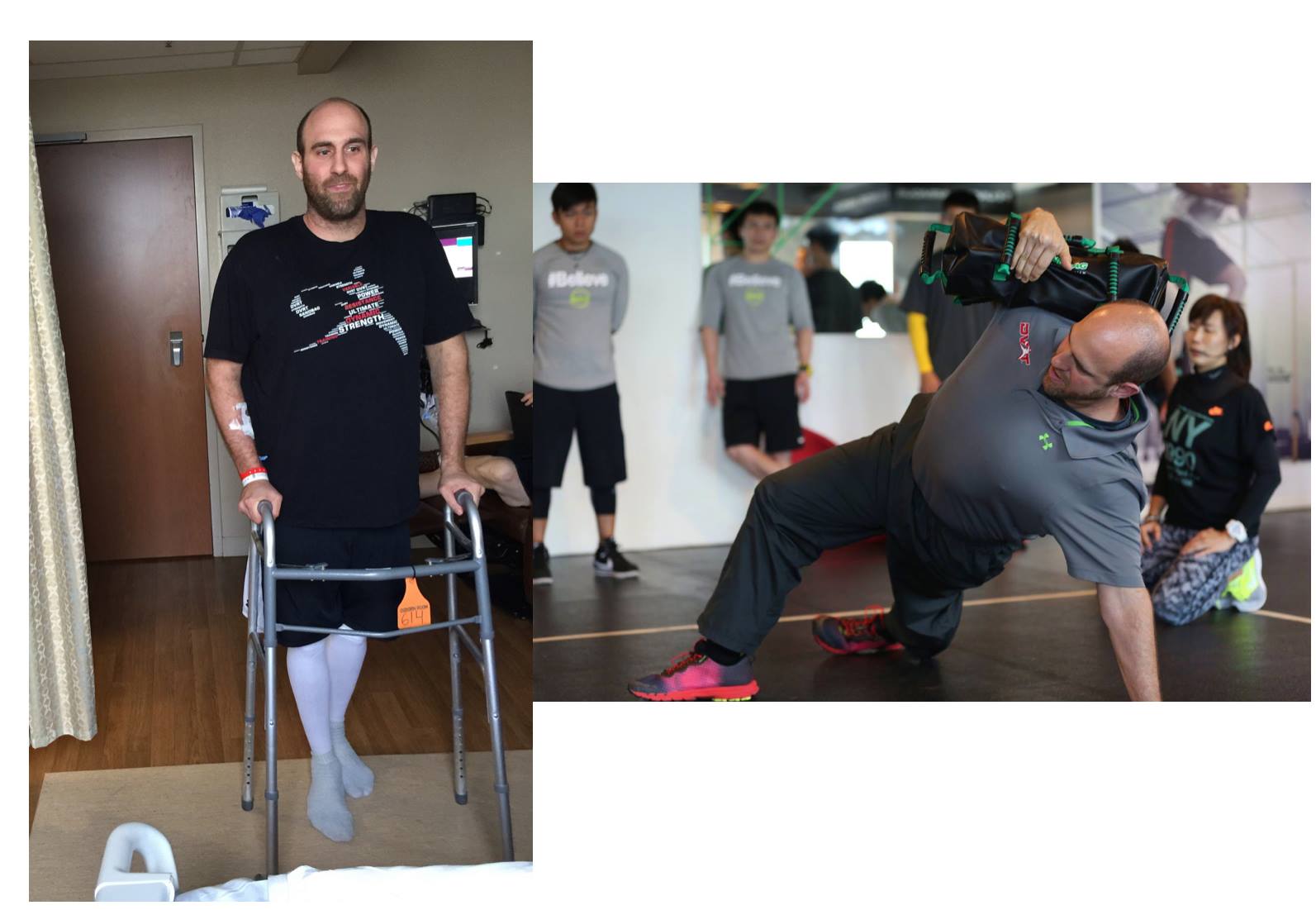3 Exercises for Solving Hip Mobility
2019-06-9
This was another incredible weekend for me kicking off the Perform Better Summits in Orlando. If you aren’t familiar, the Perform Better summits are considered the premier educational events in our industry. You have some of the most incredible speakers and highly educated coaches from around the world that come to these events. So yea, it is a big honor that I don’t take lightly to be a part of such programs.
As much as it is an honor to just present, the bigger honor comes in the form of actually teaching and working with fitness pros and therapists that are looking for strategies to solve the needs of the people that come to them for help!
Whenever I try to think of a topic to teach, I always think about…..
-What is a topic that many are talking about in our industry?
-What is a need that many find in their training?
-What unique ideas can I share to offer better solutions?

That is how I landed on the idea of developing better mobility. There is a bit in irony in such a topic as you won’t find me posting any impressive mobility feats of myself. Rather, I am the person that many professionals may relate to with the work of their clients. Having had 5 spinal surgeries my body doesn’t find mobility an easy thing to achieve. So, I have to really look at the science of how the body moves if I want to keep my mobility at a level to allow me to do the things I enjoy and live the quality of life I want.
For me, it isn’t about setting personal records (PRs), going #beastmode, or anything of that nature anymore. It is about being able to walk my dogs, go for a hike, train because I love movement and what strength makes me feel. The only way I can achieve all of this is through real strategies in changing and/or keeping my mobility.

I often tell people that I use to train to get buff and ripped, I train now to stay out of a wheelchair.

What is the difference between mobility and flexibility anyways? Why do people talk about mobility now instead of just stretching. The easiest way to think about it is that mobility is my ability to control my joint through a given range of motion where typically, flexibility is the range of motion someone else can move you through. So, why does that matter?
The biggest difference is what SHOULD cause us to change and think about how we train mobility. That is the nervous system. Yes, the unsexiest thing in strength and fitness because you can’t see your nervous system, is the number one thing that controls how you move, your strength, and everything you do.
Why is that so important? Your body has one goal, that is to survive! It doesn’t care how you look in a swimsuit, it doesn’t care how much you want to squat. Your body is designed to protect you at all costs and that can mean reducing your mobility!
That seems strange right? Why would my body want to reduce mobility when it is so important to how I live? The reason is that it is trying to protect you, often times it is about trying to protect your spine.
If you take me for example, if I lived 1,000 years ago there is a very high chance that I would be dead. The degenerative spinal disease I have would have taken over and there would have been nothing anyone could do. Kinda scary to think about.
Fortunately for modern medicine I don’t have to be scared about that, but nervous system doesn’t know that. Our bodies have been programmed from the beginning of mankind this way, so it is pretty well engrained in our nervous system to protect ourselves at all costs.
How does that relate to you or possibly people you are working with each day? For most people the biggest issue is that we simply don’t move. I still find stats like this just utterly shocking!
Less than 5% of adults participate in 30 minutes of physical activity each day only one in three adults receive the recommended amount of physical activity each week: U.S. Department of Health & Human Services

A lot of people are stuck sitting behind desks that take a toll on them physically and emotionally.
You can try to make things complicated but it largely comes down to the fact most people don’t move because of our modern lifestyles. That means our body looks to survive by conserving energy when we sit and “turns off” a lot of the muscles that are important for the integrity of our spine. Yes, many of our 35 core muscles are turned off basically to save energy.
Smart, but the issue arises when these muscles don’t magically turn back “on” when we get up and start moving around. That means we need to perform exercises and give feedback to the body to know how to get the muscles working correctly again. How does that help our mobility though?

Core is a lot more than just abs and look how many layers there are to our abdominals!
When our body feels unstable, in order to keep it protected the nervous system will reduce the ability of your arms and legs to move. Makes sense, why would your body allow big movements when it feels like it can’t control them right? That means MOST of our mobility issues are actually a byproduct of our body not feeling like it can control our movement.
https://www.instagram.com/p/ByYwx7RHrES/
Drills like Larisa Lotz shows demonstrates more advanced strategies for core strength and hip mobility/stability. How do we build our foundations though?
That leads us to why we use DVRT exercises is such a different way. Often our mobility exercises don’t outwardly look like your typical mobility drill, mostly because they aren’t! Instead of trying to focus on an individual joint, we try to make connections in the body and help the body stabilize in order to get “permission” from our nervous system to allow for more movement.
https://www.instagram.com/p/BtRap1ehZrm/
Creating tension by pulling apart the Ultimate Sandbag and using another vector of force allows us to have the thoracic spine rotation while keeping lumbar rotation which allows us to open the hips.
If you think this sounds weird, this is actually largely the premise for the famous physical therapy system, PNF. A system that many know for contract-relax methods but is FAR more extensive and coined the idea “proximal stability for distal mobility.” This is EXACTLY what we are talking about so how do we do it? Check out this videos to start getting an idea and check out more in our DVRT Pelvic Control and Shoulder courses that Jessica helped me develop to address these very issues! Get them 30% off HERE with coupon code “father”.
https://www.instagram.com/tv/Bx4qIKUDkYZ/
© 2025 Ultimate Sandbag Training. Site by Jennifer Web Design.







